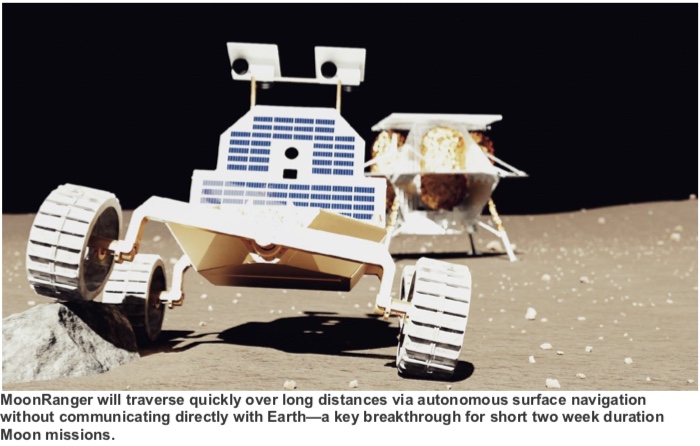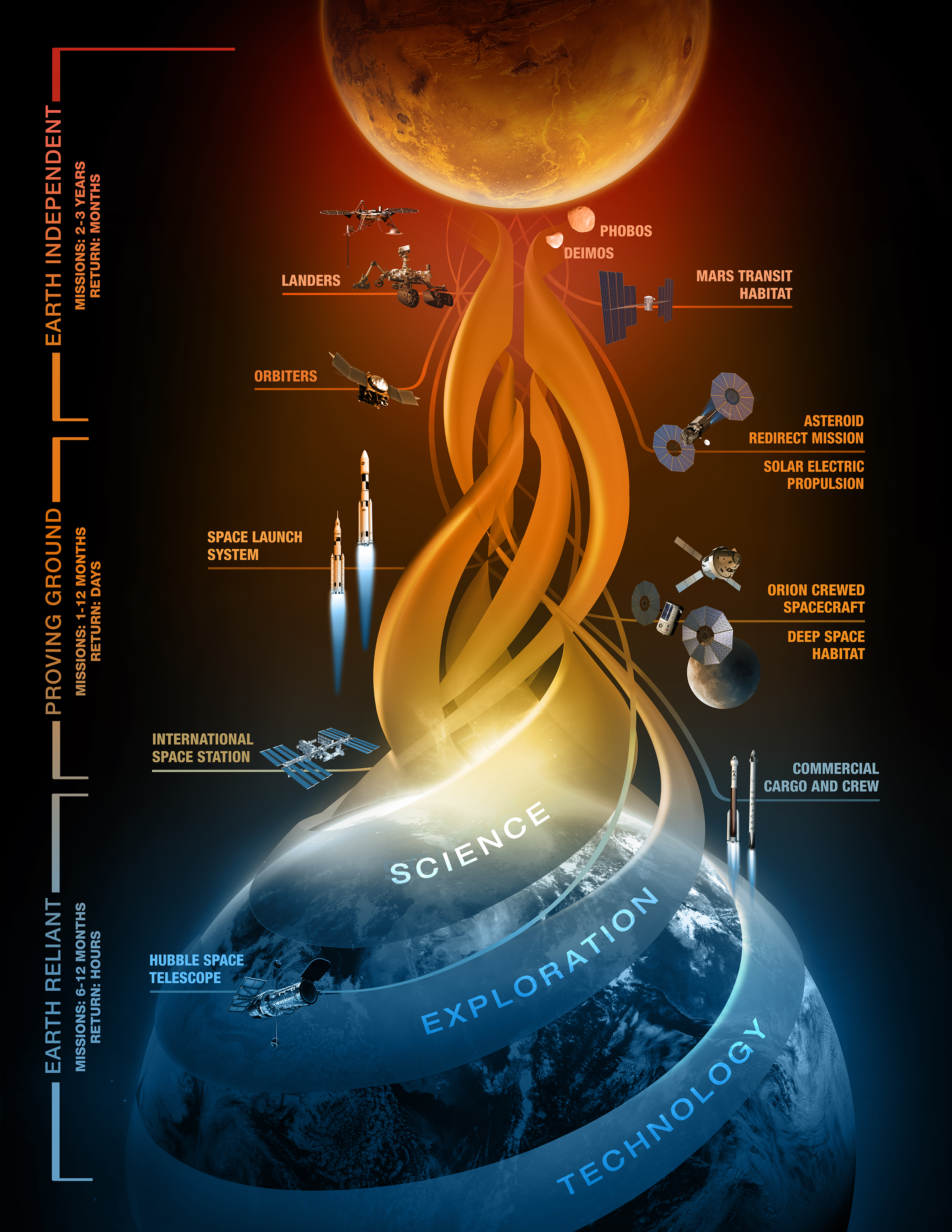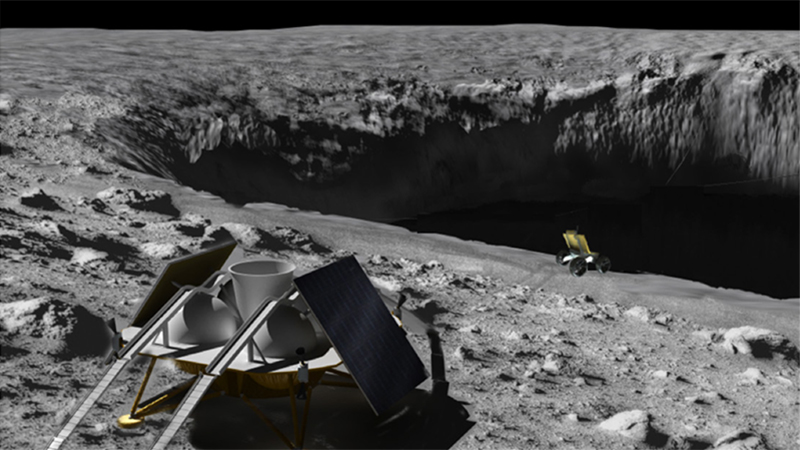Astrobotic Technology is a space robotics company based in Pittsburgh, Pennsylvania. Founded in 2007 by Carnegie Mellon University professor Red Whittaker, it specializes in lunar logistics.
Astrobotic Technology stands as a pioneering force within the aerospace sector, championing the development of robotic technology for lunar and planetary missions. The firm has made significant strides in commercializing space exploration, offering payload delivery to the Moon for governments, companies, and universities.
With a focus on affordability and accessibility, Astrobotic provides an array of services including lunar landers, rovers, and space robotics, underpinned by advanced navigation and computing systems. Their achievements represent a crucial step toward constructing a sustainable infrastructure for extraterrestrial missions. Notably, their Peregrine and Griffin landers are designed to reduce the barriers to lunar access, fostering a new era of exploration, discovery, and on-site lunar resource utilization.

Credit: www.astrobotic.com
History Of Astrobotic Technology
Astrobotic Technology is an innovator in the cosmos, pushing the boundaries of what’s possible in space exploration. Founded in the heart of Pittsburgh, Pennsylvania, this dynamic company has a rich history that goes back to the late 2000s. Let’s take a closer look at where it all began and the achievements that have marked Astrobotic’s journey among the stars.
Origins Of Astrobotic
Astrobotic’s tale starts with a bold vision to make space accessible to the world. Founded in 2007 by technology visionary Red Whittaker and his team, Astrobotic emerged from Carnegie Mellon University with a mission to build affordable space robotics. The company’s aim was straightforward: to deliver payloads to the Moon and enable a new era of exploration.
Milestones And Achievements
- First Contract: In 2010, Astrobotic secured its first contract, setting the stage for future success.
- NASA Awards: Astrobotic has been recognized by NASA multiple times, including landing significant contracts under the Commercial Lunar Payload Services (CLPS) initiative.
- Peregrine Lander: Astrobotic announced its pioneering Peregrine Lander in 2015, planning to be the first American spacecraft on the Moon since the Apollo missions.
- Griffin Lander for VIPER: In 2020, NASA chose Astrobotic’s Griffin Lander to deliver the VIPER rover to the Moon, aiming to map water ice.
Astrobotic continues to break barriers and advance the space industry. It’s not just their technology that’s reaching new heights; their partnership with NASA and other global entities is expanding the horizons of lunar and planetary exploration.

Credit: www.mouser.lu
Astrobotic Lunar Missions
The journey to the moon marks a new chapter in human exploration, and leading the charge in this cosmic quest is Astrobotic Technology. With a mix of bold dreams and innovative technologies, Astrobotic Lunar Missions aim to make lunar exploration accessible and routine. These pioneering missions open doors for research, development, and potentially even lunar settlement.
Overview of Lunar Missions
Overview Of Lunar Missions
Astrobotic has stepped into the spotlight with its cutting-edge lunar landers and rovers. They are designed to deliver payloads to the moon’s surface. With the Peregrine and Griffin landers, they offer varied capabilities to accommodate different mission needs. Plans include everything from scientific experiments to innovative technology demonstrations on the lunar surface.
Table displaying Types of Lunar Landers and their capacities
| Type of Lander | Carrying Capacity | Mission Type |
|---|---|---|
| Peregrine | Up to 265 kilograms | Multiple Payloads |
| Griffin | Up to 500 kilograms | Heavier Payloads |
Partnerships and Payloads
Partnerships And Payloads
Astrobotic’s success lies in collaborations with esteemed partners like NASA, international space agencies, and numerous commercial entities. This synergy cultivates technological advancements and broadens the horizons of lunar exploration.
Bulleted list displaying Notable Partners
- NASA – for the Commercial Lunar Payload Services (CLPS) initiative
- International Agencies – with various scientific and exploratory objectives
- Commercial Entities – looking to test technology or conduct research
The payloads range from scientific instruments to technology demonstrations and even art projects. They enable groundbreaking research and innovation on the lunar feature landscape.
Ordered list displaying types of payloads
- Scientific Instruments – to gather lunar data
- Technology Demos – to test new space tech
- Art Installations – to inspire cosmic creativity
Future Of Astrobotic
Astrobotic Technology is forging a bold new path to the Moon and beyond. This trailblazing company is set to light up the cosmos with trailblazing missions that will write history and fuel the human spirit’s unquenchable thirst for discovery.
Planned Missions And Objectives
Astrobotic’s upcoming chapter brims with thrilling objectives aimed at making space accessible and pushing the boundaries of possible:
- Delivering payloads to the lunar surface with precision.
- Expanding lunar exploration with innovative spacecraft.
- Facilitating research and commercial opportunities on the Moon.
- Empowering humanity’s return to the surface of Earth’s only natural satellite.
This exciting journey begins with the Peregrine and Griffin missions, which promise to be milestones in lunar exploration.
Impact On Space Exploration
The reach of Astrobotic’s endeavors extends beyond mere missions. They are shaping the future of space exploration:
- Fostering international collaboration through inclusive space offerings.
- Enabling a new wave of lunar science and resource discovery.
- Building the framework for a lasting human presence on the Moon.
With its visionary approach, Astrobotic stands as a beacon of progress, heralding a new era of discovery and enlightenment in the boundless sea of stars.

Credit: www.nasa.gov
Frequently Asked Questions For Astrobotic Technology
Where Is Astrobotic Technology Located?
Astrobotic Technology is headquartered in Pittsburgh, Pennsylvania, U. S.
Who Is The Ceo Of Astrobotic Technology?
The CEO of Astrobotic Technology is John Thornton.
What Is The Mission Of Astrobotic Technology?
Astrobotic Technology’s mission is to establish a sustainable data and robotics presence in space for commercial exploration and development on the Moon and other celestial bodies.
What Is The History Of Astrobotic?
Founded in 2007 by Red Whittaker in Pittsburgh, Pennsylvania, Astrobotic is a private space robotics company. They design lunar landers and rovers for space missions.
Conclusion
Astrobotic Technology stands at the forefront of the modern space race. Their commitment to advancing lunar exploration is unprecedented. With every successful mission, they pave the way for a new era in space commerce. As the stars beckon, Astrobotic’s innovations promise to unlock the moon’s mysteries.
Embracing such pioneering spirit, humanity strides closer to our celestial neighbor.

